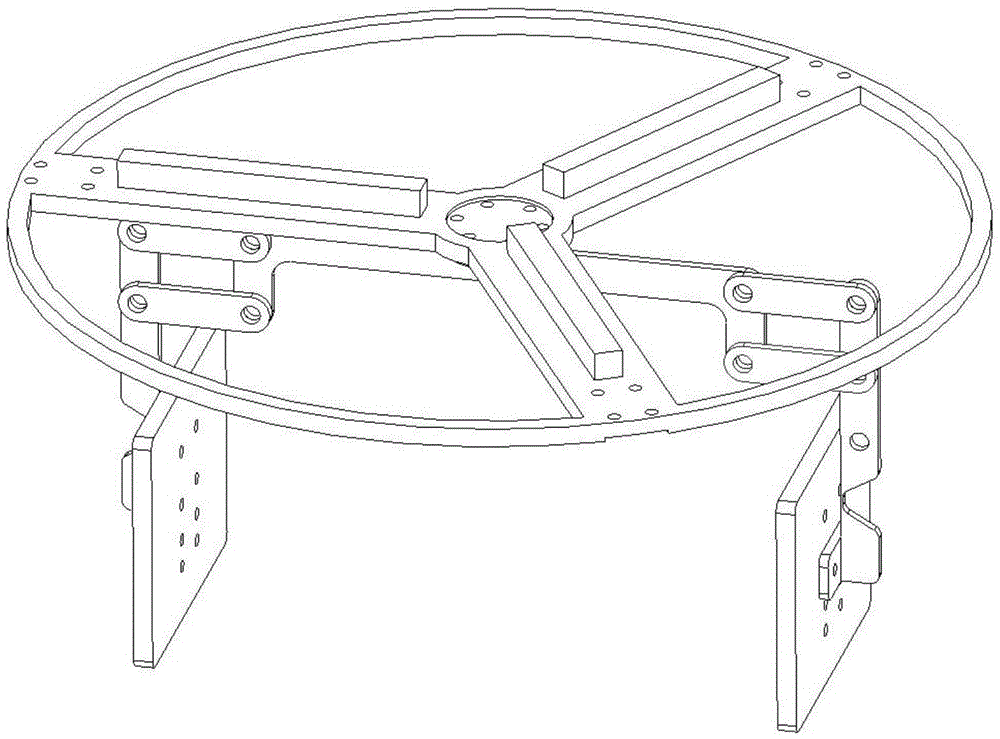Method for plating X-ray parabolic reflector surface with high-reflective film
A parabolic reflector and X-ray technology, applied in the direction of coating, etc., can solve the problems of low target utilization rate, high roughness, weak film adhesion, etc., achieve high utilization rate, high reflectivity, and prevent dust from falling Effect on glass substrate surface
- Summary
- Abstract
- Description
- Claims
- Application Information
AI Technical Summary
Problems solved by technology
Method used
Image
Examples
Embodiment 1
[0017] Use 0.2mm thick borosilicate glass coating, and use glass cleaner, acetone, absolute ethanol and deionized water to clean ultrasonically for 10min, 10min, 10min, and 10min in sequence. Vacuum to 9.9×10 -4 At Pa, start baking at 100°C for 3h. Then, Ar gas was introduced to make the pressure in the cavity reach 0.1 Pa. Move the parabolic glass substrate directly above the Cr target, apply a DC voltage of 300V to the Cr target, rotate the target at a speed of 4r / min, pre-sputter for 5min, open the baffle, and coat the Cr film for 1min. Then move the parabolic glass substrate directly above the Ir target, keep the Ar gas flowing, the gas in the chamber is still at 0.1Pa, apply a voltage of 300V to the Ir target, rotate the target at a speed of 4r / min, pre-sputter for 5min, open the baffle, Plating Ir film for 10min.
Embodiment 2
[0019] A 0.2 mm thick borosilicate glass coating is used, and ultrasonically cleaned with glass cleaner, acetone, absolute ethanol and deionized water for 20 min, 20 min, 20 min, and 20 min in sequence. Vacuum down to 5×10 -4 At Pa, start baking at 200°C for 100min. Then, Ar gas was introduced to make the pressure in the cavity reach 1Pa. Move the parabolic glass substrate directly above the Cr target, apply 410V DC voltage to the Cr target, rotate the target at a speed of 10r / min, pre-sputter for 10min, open the baffle, and coat the Cr film for 3min. Then move the parabolic glass substrate to the top of the Ir target, keep the Ar gas flowing, the pressure in the chamber is still 1Pa, apply 470V voltage to the Ir target, rotate the target at a speed of 10 / min, pre-sputter for 10 min, open the baffle, and plate Ir Film 12min.
Embodiment 3
[0021] A 0.2mm thick borosilicate glass coating is used, followed by ultrasonic cleaning with glass cleaner, acetone, absolute ethanol and deionized water for 30min, 30min, 30min, and 30min. Vacuum to 1.0×10 -4 At Pa, start baking at 300°C for 30 minutes. Ar gas was introduced again, so that the pressure in the cavity reached 3Pa. Move the parabolic glass substrate directly above the Cr target, apply a 500V DC voltage to the Cr target, rotate the target at a speed of 15r / min, pre-sputter for 20min, open the baffle, and coat the Cr film for 5min. Then move the parabolic glass substrate to the top of the Ir target, keep the Ar gas flowing, the pressure in the chamber is still 3Pa, apply 600V voltage to the Ir target, rotate the target at a speed of 15 / min, pre-sputter for 20min, open the baffle, and plate Ir Film 20min.
PUM
| Property | Measurement | Unit |
|---|---|---|
| surface roughness | aaaaa | aaaaa |
Abstract
Description
Claims
Application Information
 Login to View More
Login to View More - R&D
- Intellectual Property
- Life Sciences
- Materials
- Tech Scout
- Unparalleled Data Quality
- Higher Quality Content
- 60% Fewer Hallucinations
Browse by: Latest US Patents, China's latest patents, Technical Efficacy Thesaurus, Application Domain, Technology Topic, Popular Technical Reports.
© 2025 PatSnap. All rights reserved.Legal|Privacy policy|Modern Slavery Act Transparency Statement|Sitemap|About US| Contact US: help@patsnap.com

